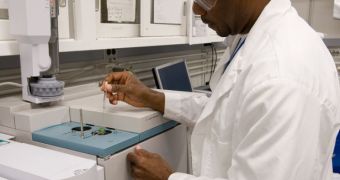According to the results of a new scientific investigation, it would appear that a class of space rocks called carbonaceous meteorites is able to carry organic compounds associated with cellular respiration through the void of space. A team of NASA experts recently identified such molecules in a space rock.
What the experts started asking themselves then was whether the compounds had formed in deep space. This is a critically important question, seeing how it has massive implications of the prospective existence of life on other worlds.
The NASA team began conducting experiments in which they stimulated the exact conditions these molecules were subjected to during their space travels. Interestingly, the group also learned that ethese molecules were several billion years old.
Some of the compounds the new work identified included critical components of the citric acid cycle, such as keto acids, hydroxy tricarboxylic acids and tricarboxylic acids. This cycle is essential for many lifeforms today, as it helps cells break down organic fuel molecules.
This process only takes place in the presence of oxygen. After the fuel molecules are broken, cells collect the energy stored within, which they then use to divide into new cells. Most plants, animals, fungi, as well as numerous species bacteria, rely on this process for cell division.
As such, the evolution of biochemical pathways here on Earth may have depended on chemicals brought to our planet by such meteorites. The theory called panspermia proposes that life was brought here, or at least facilitated, by meteorites and comets that struck our planet.
Until now, most members of the citric acid cycle had not been identified in extraterrestrial sources. Details of the new work were published in the August 23 issue of the esteemed journal Proceedings of the National Academy of Sciences (PNAS).
“Some apparently ancient and critical metabolic pathways require a suite of compounds, of which a few are very fragile,” explains research scientist George Cooper, who is based at the NASA Ames Research Center (ARC), in Moffett Field, California.
“For such compounds to have survived this long in meteorites, they would have required either a continuous energetic production, or simply very low temperatures to preserve them,” the expert says.
“We won’t know how significant our findings really are in terms of understanding pre-biological processes on early Earth, until we see more evidence from other disciplines, like astronomy, and geology. This might take a while,” Cooper goes on to say.
The NASA Astrobiology Exobiology and Evolutionary Biology Program provided the funds the team required to conduct the new study.

 14 DAY TRIAL //
14 DAY TRIAL //